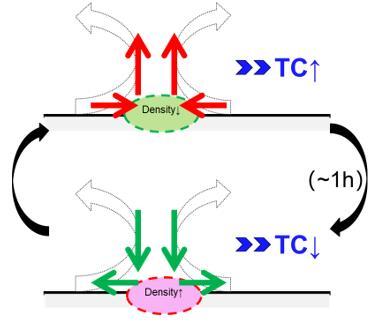How do high-frequency oscillations of tropical cyclones vary across the W North Pacific?

High-frequency oscillations and intensity of tropical cyclones. Credit: Shumin CHEN
Associate Researcher Shumin CHEN, Professor Weibiao LI and their team, from the School of Atmospheric Sciences, Sun Yat-Sen University, simulated several tropical cyclones using mesoscale numerical models.
As detailed in their paper, recently published in Advances in Atmospheric Sciences, they found that periods of high-frequency oscillations of tropical cyclones in the South China Sea are significantly shorter than those in the open water of the western North Pacific.
They further examined the dynamic and thermodynamic characteristics of all the tropical cyclones. Associate Researcher Shumin CHEN explains their findings:
“We examined the environmental vorticity, divergence, thermal winds, and the convergence winds in the lower layer. We found that the general features were similar in tropical cyclones in the South China Sea and the open western North Pacific, except that the convergence within the lower layer of tropical cyclones in the South China Sea was significantly larger than that in the open western North Pacific. Convergence enhanced by greater terrain friction in the South China Sea strengthened the disturbance and then contributed to the shorter oscillation periods”.
Professor Weibiao LI further explains that the study reveals the variations of high-frequency oscillation over different sea areas, and helps to improve the prediction of tropical cyclone intensity in different sea areas over the western North Pacific.
Media Contact
All latest news from the category: Earth Sciences
Earth Sciences (also referred to as Geosciences), which deals with basic issues surrounding our planet, plays a vital role in the area of energy and raw materials supply.
Earth Sciences comprises subjects such as geology, geography, geological informatics, paleontology, mineralogy, petrography, crystallography, geophysics, geodesy, glaciology, cartography, photogrammetry, meteorology and seismology, early-warning systems, earthquake research and polar research.
Newest articles

Properties of new materials for microchips
… can now be measured well. Reseachers of Delft University of Technology demonstrated measuring performance properties of ultrathin silicon membranes. Making ever smaller and more powerful chips requires new ultrathin…

Floating solar’s potential
… to support sustainable development by addressing climate, water, and energy goals holistically. A new study published this week in Nature Energy raises the potential for floating solar photovoltaics (FPV)…

Skyrmions move at record speeds
… a step towards the computing of the future. An international research team led by scientists from the CNRS1 has discovered that the magnetic nanobubbles2 known as skyrmions can be…




















